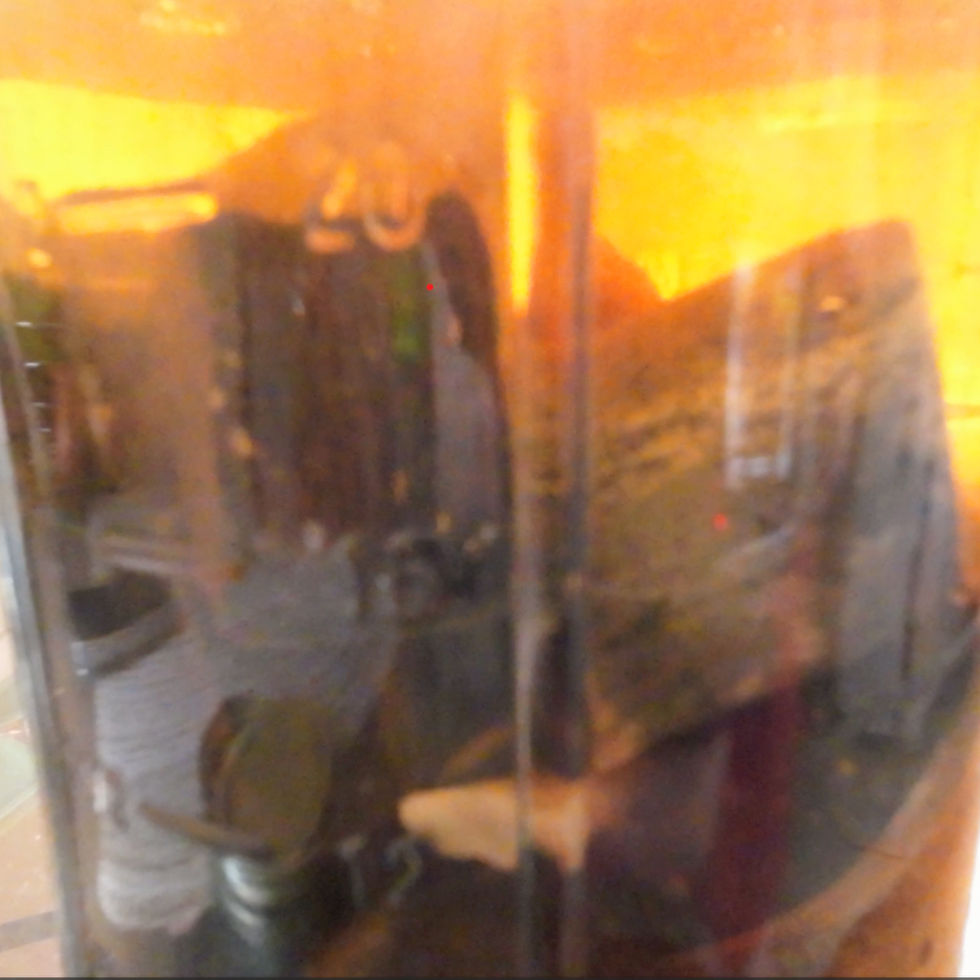Licorice, Grow Your Own
- Sherri Miller

- Mar 20, 2022
- 3 min read
Updated: Nov 2, 2022

GROWING LICORICE Licorice, Glycyrrhiza glabra, also known as Sweet Root, is a perennial shrub found wild in areas of the world with Mediterranean climates. Its roots are important in medicine, for flavoring, and teas. It was so important in the ancient world. it was found in King Tut's tomb alongside gems and priceless treasures. Glycyrrhrizin, the compound in licorice root responsible for the sweet taste, is an antioxidant, anti-inflammatory, and anti-microbial.
In Korean Natural Farming it is a necessary ingredient in Master Cho's Oriental Herbal Nutrient, OHN, which is used as a medicinal tonic for people, animals, and plants, and is found in all of his formulas.
Since it is a legume licorice fixes nitrogen. Stems bear alternate pinnate leaves with 3-7 pair of dark oval leaflets. Pea-like flowers come in many colors, yellow, blue, violet, lavender, and white. Flowers appear throughout the summer. USES Licorice is one of the world’s oldest herbal remedies. The Romans used it for stamina. In Arabia it was used for skin lesions and blisters. Hindu used it for virility and Chinese for longevity. It has been used for treating upset stomachs, to reduce inflammation, and for treating upper respiratory conditions. • Skin problems & eczema • Virility • Longevity • Upset stomach • Reduce inflammation • Treating upper respiratory system It is used extensively in modern medicine in laxatives and cough syrups. The sweet taste, in addition to the medicinal value, helps overcome the nasty and bitter taste of some medicines. It is used as an ingredient in detox teas, for supporting the immune system, and to treat aliments such heartburn, acid reflux, ulcers, hot flashes, coughs, and for bacterial and viral infections. • Detoxification • Immune support • Heartburn, acid reflux & stomach ulcers • Hot flashes • Coughs • Bacterial & Viral infections Caution should be used as licorice may cause side effects in large amounts, especially when taken in supplemental form. This sweet root is also used to make licorice candy, delicious and medicinal teas, and other flavorings. The root of the licorice plant is rather sweet. In fact it's name, Glycyrrhiza glabra comes from the Greek "Glycys" meaning sweet, and "Rhiza" meaning root. It is also called Sweetroot or Sweetwood. Most licorice candy in the USA contains no licorice, but is flavored with anise, a spice that is associated with black licorice flavor. If you do not like licorice (anise-flavored) candy, you might find you do enjoy real licorice. This delicious medicinal plant is not hard to grow. PROPAGATION Licorice can be started from divisions, root cuttings, or seeds in the spring or fall. They prefer full sun to partial shade, with moist but well drained soils. They do best in dry stony soil in full sun, such as the banks of rivers or in seasonal river beds. It is cold hardy and tough once established but the extensive roots need drainage. This perennial shrub reaches five feet in height.
If propagating from seeds start them in the spring or fall. The seeds should soak for two hours (KNF Seed Soaking Solution-SES is best), then stratified for 3-4 weeks by keeping moist in a fridge. Sow them with a thin layer of soil and keep moist as they emerge. Seedlings should sprout within 7-10 days. Keep seedlings indoors if in a temperate or cold climate. PLANTING If planting from seedlings be sure the plants are large enough to have their first set of true leaves. Plant out on an overcast day ideally in a place where they can naturalize. Dry stony soil with good drainage is best. They prefer full sun. Ideal spacing is about half a meter or less (1-1.5 feet). Good plant companions are leafy greens such as spinach and lettuce. HARVESTING Commercially licorice root is harvested after 3-4 years growth. They can be harvested after one year but are much better after three years. Harvest in late summer. Remove most of the larger roots then replant stems.
Licorice is an easy to grow, perennial, nitrogen fixing plant which once established will supply you with sweet delicious and medicinal licorice root every year, and can be easily propagated without buying more seeds or starts. Where are you going to plant yours?




Comments